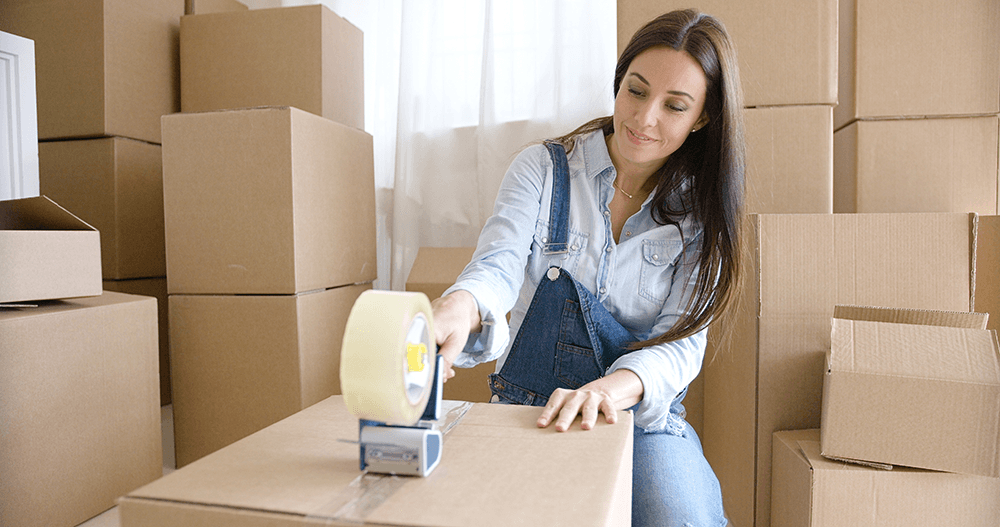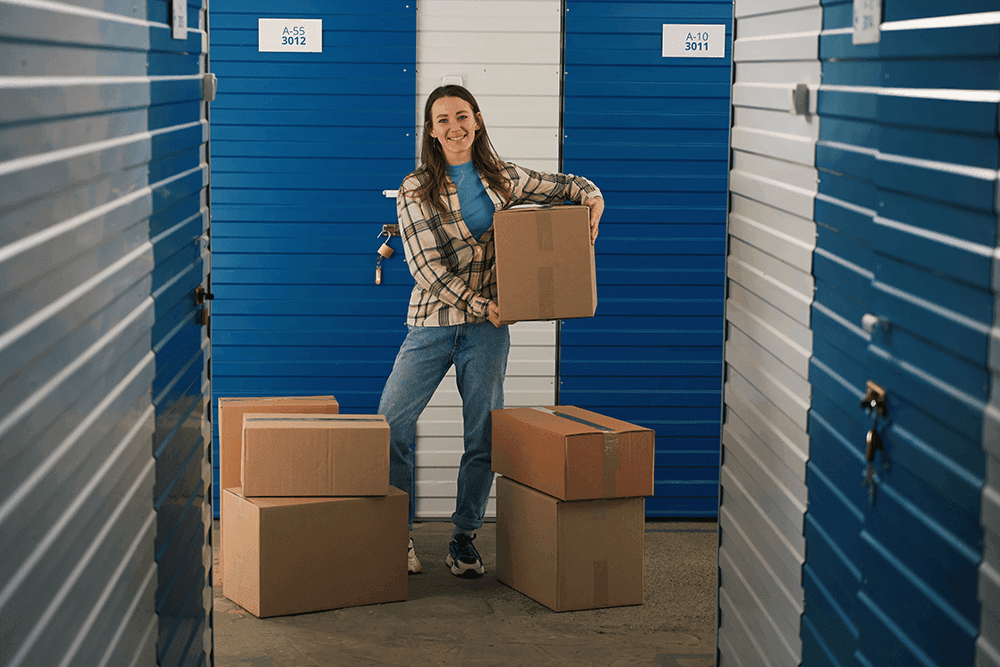
 Moving Tips
Moving TipsWhat's the Best Tape for Moving Boxes?
When it's time to move, it's important to have a list of essentials to help you protect, store, and transport your belongings safely. Your supply list depends on the type of items you need to move. However, since the majority of most moving projects involves storing loose items, the chances are high you'll use moving boxes and need to seal them with tape. In fact, tape is one of the most useful moving day supplies you can have. Below, is a detailed and informational guide for finding the best tape solutions for your move.
What Kind of Tape Should I Use on Moving Boxes?
Not all tape is suited for sealing boxes and securing moving blankets. Good moving tape will have excellent adhesive, be strong, and easy to use.
Quality Adhesive: First of all, if your tape isn't sticky enough, it's not going to handle a long transit or months in storage. Before you use the tape for sealing boxes, check to see how it sticks to the materials you need to keep in place. Also, make sure that the tape isn't too old or damaged. Tape that isn't in peak condition can have discolored and gummy adhesive that leaves behind sticky residue on surfaces.
Durability: A tape's strength doesn't just depend on the quality of its adhesive but on its thickness. The thicker the backing material, the heavier weight it can support. Aim for a thickness between 1.9 and 3.1 millimeters for the best results. Heavy boxes need a tape that leans toward the thicker end of this spectrum. They may also require even more reinforcement such as filaments integrated into its backing.
Ease of Use: If you waste time fumbling with tape that doesn't cooperate, then you'll have a frustrating moving day. Invest in a tape that doesn't split while you're dispensing it. Also, use a tape gun so that you keep one end of the tape loose and ready for application, so you don't waste time finding the end that has stuck back to the end of the roll.
So what kinds of tape make the cut and which ones should you avoid for the best moving day? Here are the results.
The Best Tape for Moving Day
When it's time to move, you need a tape that is strong, sticky enough and not a pain to use. These products will help you pack efficiently and with confidence.
Shipping Tape: You don't have to look far to find the best choice for moving day. Shipping tape has a hot melt adhesive that is strong enough to withstand the rigors of moving. Shipping tape has a distinctive crackle when you dispense it because it is lighter than storage tape, which is heavier and made of acrylic.
Filament Tape: Also known as strapping tape, is easily identifiable by the vertical strands of fiberglass that run down the tape roll. They can also come in a criss-cross pattern. The filaments reinforce the tape to provide support for heavy boxes that will endure a lot of stress during their journey. Filament tape is also impervious to extreme temperatures, which make it a good storage tape as well. This type is available in different grades to support weights between 100 and 380 pounds.
Gummed Paper Tape: This tape's adhesive is activated by water. Though it can take time to apply, this tape offers an extremely strong and permanent bond. Since it will leave a mark if you try to remove it from surfaces, it should only be used on items like cardboard boxes that you don't want to keep. Gummed tape strengthens boxes and is suited for supporting heavy contents and sealing boxes for storage. If you find yourself using many layers of thin tape, you can actually save time by using one layer of gummed tape. You can also get this type of tape with fiberglass filaments for extra reinforcement.
Labeled Tape: Knowing where things are and where they go saves a lot of time after you get to your destination. Labeled tape displays the room each box belongs in all over it, so you can easily see where your items go. By investing in labeled tape, you can easily identify a box's contents without having to go on a wild search for a hastily written label with a permanent marker.
Types of Tape to Not Use on Boxes
Though the following products have excellent uses around the home and office, they aren't as well suited for moving day.
Duct Tape: The rubber adhesive of duct tape is a crowd-pleaser for quick fixes and even prom dress competitions, but it is ironically not good at sticking to cardboard. It can also leave behind a sticky residue on power cords and other plastic surfaces. This stickiness is amplified in the summer months when hot temperatures melt the adhesive.
Masking Tape: While this thin and slightly sticky tape is a painter and crafter's dream, it doesn't stick to cardboard well and hardly reinforces boxes. However, these are not bad for keeping power cords organized because they don't leave behind a sticky residue.
Scotch Tape: Though this is an office staple, scotch tape doesn't have much of use on moving day. It's good at sealing small paper items like wrapping paper and envelopes but are not strong enough to seal moving boxes. It's also not wide enough to properly seal the tops and bottoms of boxes.
Electrical Tape: this tape is specifically meant to insulate and bind electrical cords, which makes its vinyl surface flexible and easy to reposition. If it's the only tape you have on-hand for loose items, it can do a decent job, but it has no function for your moving boxes.
Brown Paper Packing Tape: Many people love the convenience of being able to tear off sections of this tape without needing a tape gun. However, this convenience also means that it can easily rip or be compromised by water damage. If it's all you have, then restrict its use to small, light boxes and be sure to handle these boxes gently.
We're Your Storage Solution!
Storage Rentals of America is your convenient self-storage solution. So come into our office or give our storage experts a call at 1-800-457-5678. Our call center is available 7 days a week and can help determine which storage unit size best fits your storage needs.



